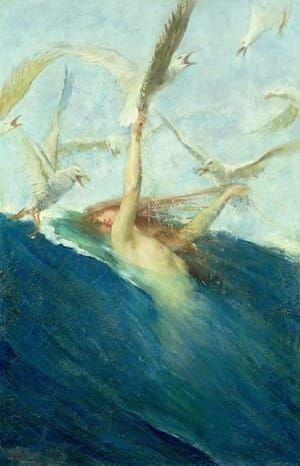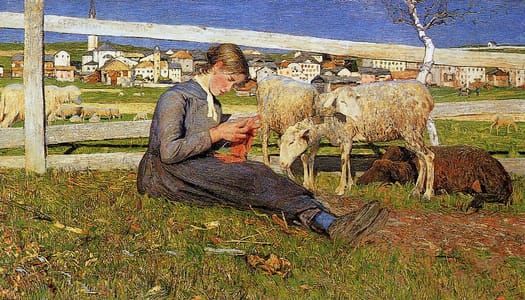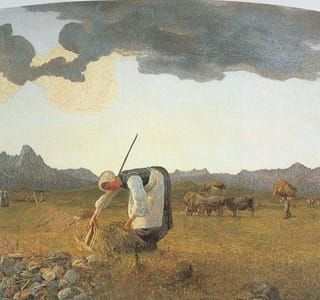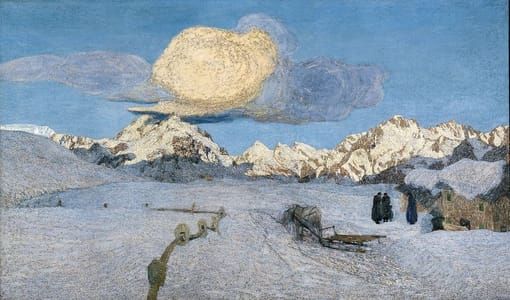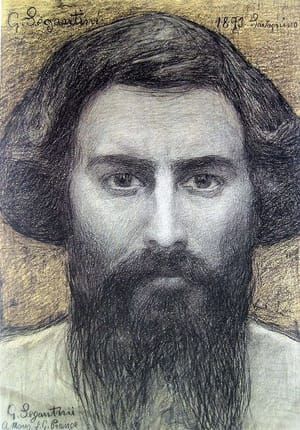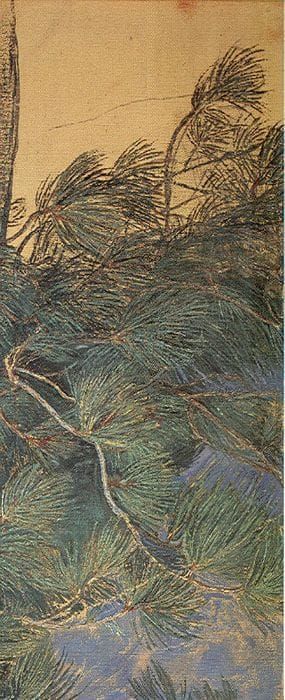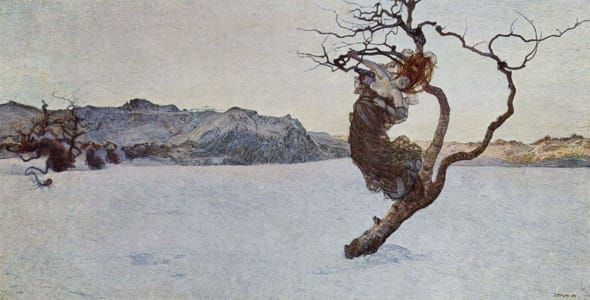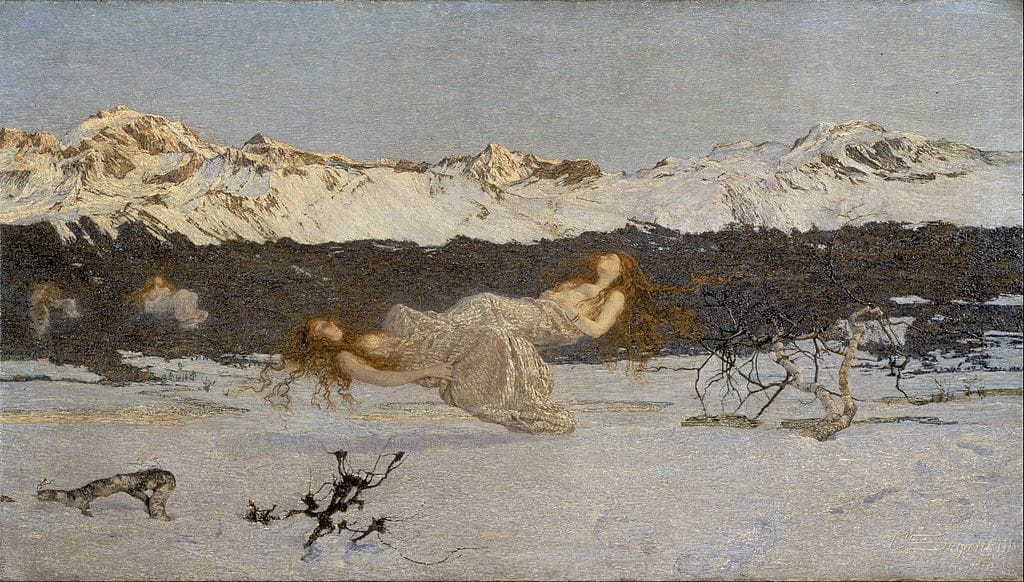

The Punishment of Lust, 1891
Giovanni Segantini
The Punishment of Lust (Italian: La Punizione della Lussuria), also called The Punishment of Luxury, is a 1891 oil painting on canvas by the artist Giovanni Segantini.
Segantini painted The Punishment of Lust in 1891; it was an early entry in a thematic series on cattive madri (bad mothers) that he produced between 1891 and 1896 (the Nirvana cycle). Taking its inspiration from Nirvana published in 1889 – supposedly a translation from the 12th-century Indian Panghiavahli of Maironpada by the librettist Luigi Illica but probably written by him or translated from an intermediate work – it shows women being punished for preferring a life of ease over a life of duty by being suspended in limbo among the barren landscape of the Alps.
Segantini had been raised a Catholic and believed strongly that the role of a woman was to be a mother; the Nirvana cycle illustrates the outcome for women who failed in that role and contrasts with Segantini's Angel cycle, produced over the same period, that depicts the reward derived from being a good mother. Segantini's longing for the mother who had died when he was a child coupled with his resentment at losing her may be reflected in this dichotomous approach to the theme of motherhood.
The women in The Punishment of Lust are suggested to have aborted or lost their children, and although this would have been a cardinal sin in Segantini's eyes, he has still treated them sympathetically and, as the poem Nirvana does, hints that they could be redeemed; they are suspended in a dream-like state and, though stark, the landscape is not unpleasant – Segantini regarded the mountains as his spiritual home – and the inclusion of withered trees symbolizes a possible return to life in a new spring.
The painting was purchased by the Walker Art Gallery in Liverpool in 1893, but before it was exhibited it was retitled The Punishment of Luxury (luxury being an archaic translation of the Italian lussuria) as the mention of "Lust" was thought to be too challenging for a Victorian public.
(https://en.wikipedia.org/wiki/The_Punishment_of_Lust)
The souls of the women are depicted floating against a snowy background based on the Swiss Alps where Segantini spent much of his life. The grandeur and spirituality of the Alps must have been a constant inspiration to Segantini whose last words before he died are recorded to have been: "I want to see my mountains". In the painting the spirits of the women are punished for having committed the sin of abortion consciously or by neglect.
(http://www.liverpoolmuseums.org.uk/picture-of-month/displaypicture.aspx?id=30)
Uploaded on Oct 31, 2017 by Suzan Hamer
Giovanni Segantini
artistArthur
Wait what?

